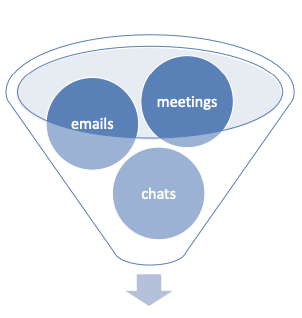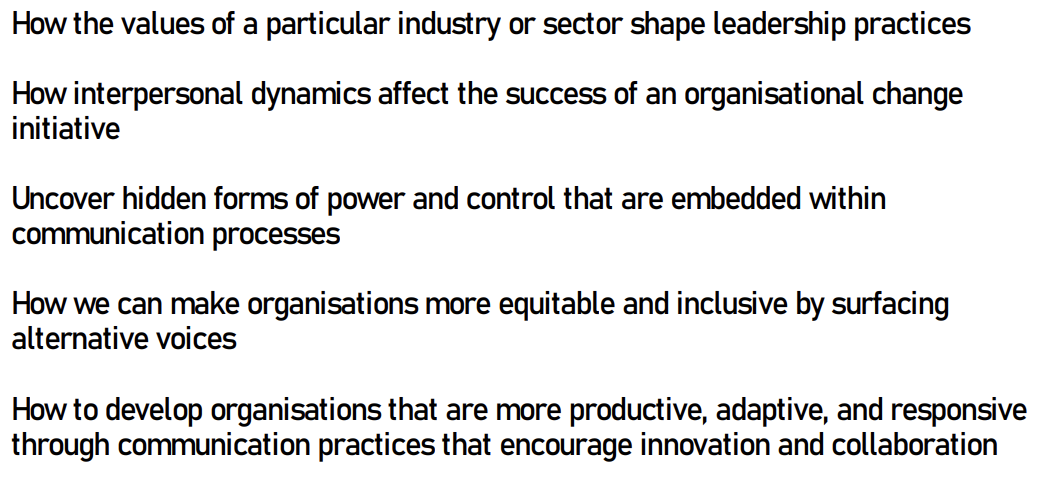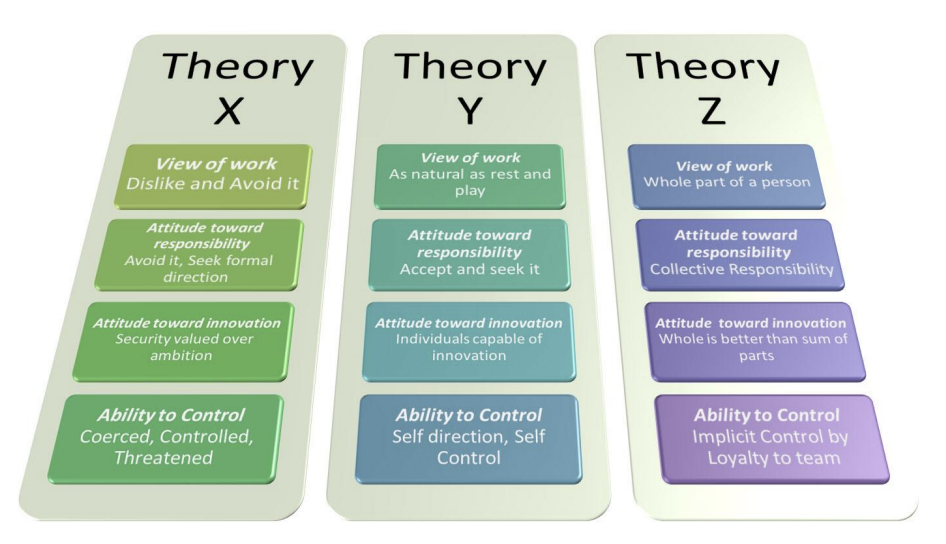Lecture 1 - Organisational communication and Management theory
1/19
There's no tags or description
Looks like no tags are added yet.
Name | Mastery | Learn | Test | Matching | Spaced |
|---|
No study sessions yet.
20 Terms
What is organisational communication?
Communication that happens within organisations (Emails, newsletters, chats, meetings)
Organisations as containers where communication flows inside
Explanatory framework from which to understand complexities of organising
To study organisational community action = to examine and improve the fundamental social processes of organising

Complexity of communication

Information transfer → exchange of data to the right people
Shared meaning → mutual understanding and interpretation of messages by different members
Transactional → continuous interaction, meaning-making, relationship-building
Models of communication
Transmission Model of Communication
Constitutive Model of Communication
Transmission model of communication
Effective organisational communication: Transmitting the right information to the right people at the right times in the right ways
Constitutive model of communication
Communication shapes our social realities and how we socially construct the meanings and interpretations that shape our lives
Communication constitutes (creates, define, makes up) our social worlds
Organisations are seen as communicative entities built on ongoing interactions and shared interpretations
Organisations are…
…social realities → orgs shaped by human actions and communication
…manifestations of human activity and communication → dynamic collections of interactions, decisions, relationships, negotiations and cultural norms
…communicative → continuous evolution through communication, influencing and being influenced by the interactions between members
Shortcomings of transmission model
Good at examining how people transmit information within the system, not good at understanding and explaining the nature of organisations
Sees communication as a neutral pipeline of information, ignores how interactions create or change the things we are communicating about
Static model, not capturing the dynamic and relational processes that are fundamental to how organisations evolve
Aspects of organisations
Organisations have implicit norms that are sustained through communication → roles, decision-making processes, cultures, ways of working, and structures
These aspects are often taken for granted and invisible until examined
Formal hierarchies, informal cultures and routine communication practices are crucial to maintaining organisational functioning
How communication shapes an organisation
Communication defines an organisation’s culture, establishes norms, and influences the way decisions are made
Shapes organisational identity and reality by facilitating the social processes of negotiation, agreement and conflict

Communication as a lense to explain other social phenomena
Organisational communication helps us understand broader social phenomena like power dynamics, leadership styles and employee motivation
Examining how communication flows and is interpreted, we gain insight into how organisations reflect, reinforce or challenge societal values

Post-positivist perspective
Purpose: To understand how an organization is functioning by identifying causal relationships (e.g., if X happens, then Y will follow)
Goal: Improve functioning and efficiency by identifying quantifiable variables and causal patterns
Quantitative methods: Focus on data and statistics, aiming for objectivity, reliability (replication), and generalizability (predicting phenomena)
Example: A post-positivist researcher might explore why certain management interventions are more successful than others, or investigate the prevalence and impact of workplace bullying.
Interpretive perspective
Focus: The interpretive perspective seeks to understand the subjective meaning of experiences—how individuals within organizations interpret and make sense of their interactions and environment
Reality and knowledge are constructed through communication.
Qualitative research methods (e.g., interviews, participant observation) are used to gather rich, detailed insights from multiple perspectives.
Unlike the post-positivist approach, interpretive researchers embrace biases and recognize that meaning-making is socially negotiated.
Example: How do employees interpret management's communication about work conditions? The interpretive researcher might find diverse viewpoints on whether communication from leadership feels supportive or manipulative.
Critical & feminist perspectives
Focus: Critical perspectives view organizations as sites of power and domination. These perspectives aim to identify and challenge power imbalances
Goal: Transformative action, promoting resistance and the emancipation of marginalized or oppressed groups
Feminist approaches
Organizations are seen as inherently patriarchal, dominated by masculine ideologies that prioritize control, rationality, and competitiveness over cooperation, intuition, and empathy
Masculine ideology: Aggressiveness, competitiveness, control, rationality, individuality
Feminine ideology: Cooperation, intuition, connectedness, empathy, emotion
Communication as constitutive: Power dynamics and gender norms are enacted and perpetuated through communication processes within organizations
Example: If a tree falls in the woods and there is no one there to hear it, did it really make a sound?
Post-positivist: Would argue that the tree makes a sound if we can measure the vibrations
Interpretive: Would explore how we define "sound" and suggest that without someone listening, there may not be a shared experience of sound
Critical: Would question why the tree fell in the first place, who benefits from its fall, and what the larger environmental and societal implications are, such as deforestation practices
First management theory
Reflects on society at that moment in history
Industrialisation → Machine Theory: every employee has a specific defined role within the system to maintain productivity
Post-Positivist lens + Machine theory = dynamic system influenced by human behaviour, introduces a richer perspective
Standardized human labor: rational, impersonal way of organizing in the best possible way, prioritizes process over individual needs or creativity
Classical management theory methods (top-down)
Taylor (prescriptive, micro): Focuses on efficiency and the optimization of tasks. Managers are the thinkers, workers are the doers. Tasks are broken down into simple, repeatable actions
Fayol (prescriptive, macro): Emphasizes command, coordination, control, and the overall organizational structure. It focuses on maximizing productivity across the entire organization
Weber (ideal): Advocates for authority, hierarchy, and formal rules to ensure fairness and transparency within the organization
Human relations management key things:
Hawthorne studies: experiments designed to find ways to increase productivity
Serendipity: Looking for something, you find something else
Importance of human factors: personal attention
Human resources management
From human relations to human resources → Balance emotions and efficiency
Became popular in 1970s and 1980s → Economy shifted from manufacturing to service
Human assets → Employees seen as sources of creativity, innovation, and problem solving
Theory X, Y, Z
Theory X: Assumes that employees are inherently lazy and need to be controlled through external motivation and supervision
Theory Y: Assumes that employees are self-motivated and seek responsibility, and should be empowered to make decisions
Theory Z: Combines elements of both X and Y, emphasizing long-term employment, strong organizational culture, and mutual trust between employees and management
